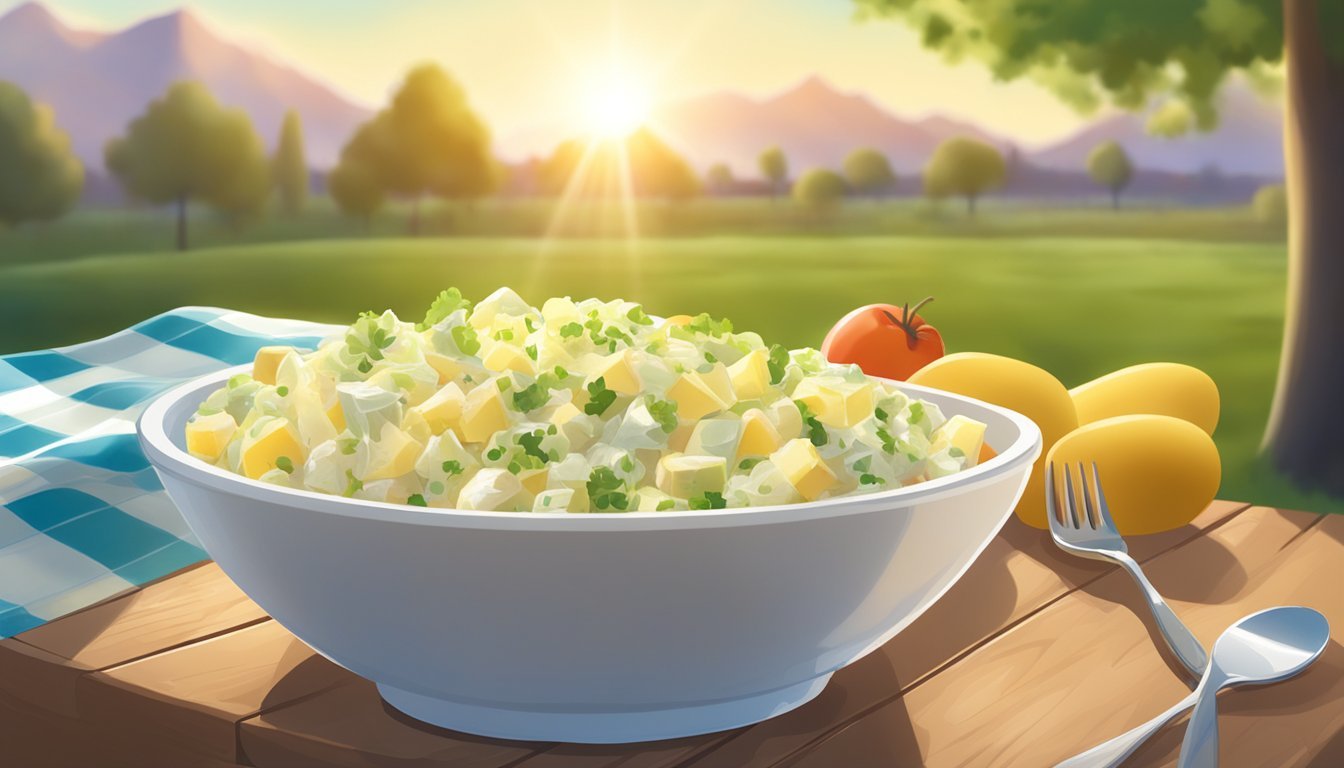How Long Does Potato Salad Last?
Shelf Life and Storage Tips
Potato salad is a classic side dish often found at picnics and family gatherings, made with potatoes (What wine goes well with potatoes?) and a variety of potential ingredients like mayonnaise, mustard, eggs, and onions. The shelf life of potato salad is a common concern because it typically contains perishable ingredients that can spoil quickly. Proper storage in the refrigerator can extend its freshness, making it safe to consume.
Generally, potato salad is safe to consume for 3-5 days when stored in the refrigerator at or below 40°F (4°C). The exact duration can depend on several factors, including the freshness of the ingredients used, whether it is homemade or store-bought, and how it is prepared and stored. Foodsafety guidelines suggest that if a potato salad has been left out in temperatures above 40°F for over two hours, it should be discarded to avoid the risk of foodborne illness.
It's important to pay attention to the use-by dates on store-bought potato salads (What wine goes well with salads?) and to use sensory cues such as odor, texture, and color changes to assess the freshness of homemade potato salad. Keeping potato salad chilled consistently, not allowing it to sit out during events, and using clean utensils to serve it can help ensure its longevity and safety for consumption.
Understanding Potato Salad
Potato salad is a classic dish that consists mainly of potatoes and an array of varying ingredients, which can include hard-boiled eggs, mayonnaise, vinegar, onions, and diverse seasonings. The dish is a staple at picnics and potlucks, appreciated for its creamy texture and comforting taste.
Key Ingredients:
Potatoes: The foundational element of the salad, which can be of different types, affecting the texture and flavor.
Eggs: Often added to enrich the salad's texture and to provide a source of protein.
Mayonnaise: Commonly used for a creamy dressing, though alternatives may be used for different dietary needs.
Vinegar: Provides a tart contrast to balance flavors.
Onions and Seasonings: These enhance the overall flavor profile, with onions giving a crunch and seasonings adding depth.
Some variations use dairy, such as sour cream or yogurt, to create a richer salad, while vegan potato salad substitutes animal ingredients with plant-based ones, often using vegan mayonnaise or alternative dressings.
The freshness of ingredients plays a critical role in both the taste and the shelf life of the final product. Fresh high-quality ingredients can result in what many might consider the "best potato salad."
Recipes vary widely, with some focusing on simplicity, while others may include a plethora of vegetables, herbs, and spices. Despite its name, a potato salad's flavor and texture can vary greatly depending on the recipe used, reflecting the diverse culinary traditions and personal preferences of those preparing it.
Proper Storage Practices
Proper storage practices are vital for maintaining the freshness and safety of potato salad. These techniques help extend the shelf life and prevent spoilage while keeping the dish ready for consumption.
For the most extensive selection, I suggest buying airtight containers online!
Refrigeration Essentials
Refrigerating potato salad is key to keeping it safe to eat. It should be stored at a consistent temperature of 40°F or below. Ensure the salad is covered or in an airtight container to prevent cross-contamination and absorption of other food odors.
Freezing Techniques
While freezing potato salad is generally not recommended due to potential texture changes, especially in mayo-based or dairy-based dressings, if you must freeze it, seal it in an airtight container. To use, thaw in the refrigerator.
Alternative Containers and Environments
Store potato salad in glass or plastic airtight containers. Avoid leaving the salad in environments above 40°F, such as direct sunlight or a warm room, to prevent bacterial growth.
Shelf Life Considerations
Refrigerated potato salad typically has a shelf life of 3 to 5 days. Always label with the storage date to keep track of its lifespan and reduce the risk of consuming expired food.
Safety and Spoilage Indicators
Discard potato salad if it exhibits a strange smell, becomes overly tender, or has a slimy texture. Visible mold or discoloration are clear signs it is no longer safe to consume.
Handling Leftovers
Leftovers should be promptly returned to the fridge within 2 hours of serving. For outdoor events like picnics or barbecues, keep the salad in a cooler to maintain a safe temperature.
Preparation Tips for Longevity
When preparing potato salad, boil and peel potatoes thoroughly, add preservatives like lemon juice or vinegar, and keep the dressing simple to extend freshness.
Understanding The Danger Zone
The "danger zone" refers to temperatures between 40°F and 140°F, where bacterial growth spikes. Keep potato salad out of this range to prevent foodborne illness.
Acid and Dairy in Potato Salad
Acidic ingredients like vinegar or lemon juice can help preserve the freshness of potato salad, whereas dairy-based elements, including mayo, sour cream, or Greek yogurt, are more susceptible to spoilage.
Freshness and Quality Maintenance
For the best taste and texture, consume refrigerated potato salad within the recommended shelf life and always keep it cool and chill until serving.
Specific Ingredient Preservation
Use fresh ingredients like crisp vegetables and hard-boiled eggs. If the salad contains perishable add-ins, such as cooked chicken or seafood, pay particular attention to quick and cool storage.





